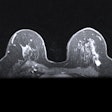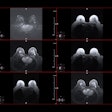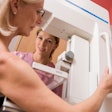Breast density, obesity, and hormone replacement therapy use are tied to interval breast cancer in Korean women when compared with screen-detected breast cancer, according to research published May 20 in JAMA Network Open.
A team led by Boyoung Park, MD, PhD, from Hanyang University in Seoul, South Korea also found that overall mortality from interval breast cancer is comparable with that of screen-detected breast cancer in these women.
“These findings also suggest that higher supplemental breast ultrasound use among Korean women, especially those with dense breasts, could be attributed to a lower incidence of interval breast cancer among women with dense breasts compared with women with screen-detected breast cancer, due to greater detection,” the Park team wrote.
In South Korea, breast cancer is the most common cancer type in women aged 35 to 64 years. Its incidence has been increasing since nationwide cancer statistics were first reported in 1999, the researchers noted.
They added that risk factors for interval breast cancer, which has more aggressive features than screen-detected breast cancer, and their association with mortality outcomes, have not been well studied.
Park and co-authors evaluated risk factors associated with interval breast cancer and survival among Korean women with the disease compared with those with screen-detected breast cancer. They included data collected between 2009 and 2012 from women who participated in the Korean National Health Insurance Service Database.
The study included mammographic data from 8,702 women with interval breast cancer and 9,492 women with screen-detected breast cancer.
Women with interval breast cancer were younger at the time of cancer diagnosis (53.3 years) compared with those with screen-detected breast cancer (54.1 years). Additionally, the proportion of BI-RADS category 4 tumors was higher for women with interval breast cancer (23.3%) compared with those with screen-detected cancers (20%).
The team also reported that increased BI-RADS mammographic density category led to decreased probability of interval breast cancer and that lower body mass index (BMI) was tied to a higher likelihood of interval breast cancer.
| Associations between patient characteristics and likelihood of interval breast cancer | |
|---|---|
| Patient characteristic | Adjusted odds ratio (OR) |
| Breast density category 1 | Reference |
| Breast density category 2 | 0.76 |
| Breast density category 3 | 0.70 |
| Breast density category 4 | 0.80 |
| Overweight | 1.19 |
| Normal weight | 1.24 |
| Underweight | 1.36 |
| Menopause | 1.21 |
| Hormone replacement therapy | 1.40 |
After adjusting for covariates, the researchers observed no statistically significant increase or decrease in the risk of death from all causes, breast cancer-related death, deaths other than breast cancer, or deaths other than cancer when comparing interval with screen-detected cancers. However, interval breast cancer had a 1.12-fold higher risk of cancer-related death, they noted.
Finally, after stratifying interval cancers by diagnostic period after a negative screening result, the team observed a 1.18-fold increased risk of all-causes death when interval breast cancers were diagnosed within six to 12 months. It also reported a 1.19-fold higher risk of breast cancer-related death, and a 1.20-fold increased risk of cancer-related deaths in this period compared with screen-detected cancers.
“Otherwise, increased mortality or cause-specific mortality was not observed for interval breast cancer at 12 to 24 months compared with screen-detected breast cancer,” the researchers wrote.
The study authors highlighted that their results show could reflect the wide application of breast ultrasonography for breast cancer screening.
“Additional research is warranted to determine whether a shortened screening period and new screening strategies are needed for women with risk factors for interval breast cancer,” they concluded.
The full study can be found here.



















